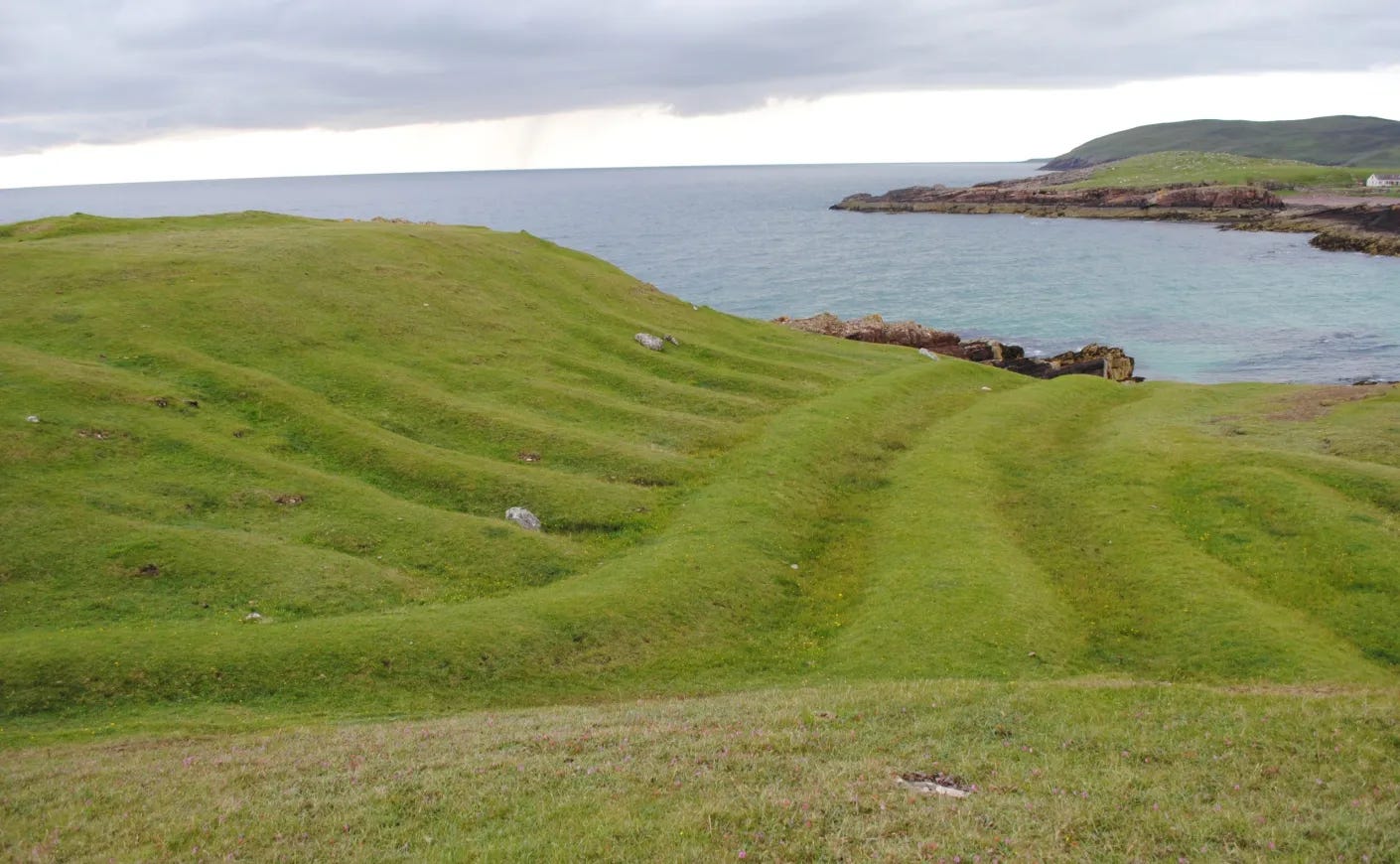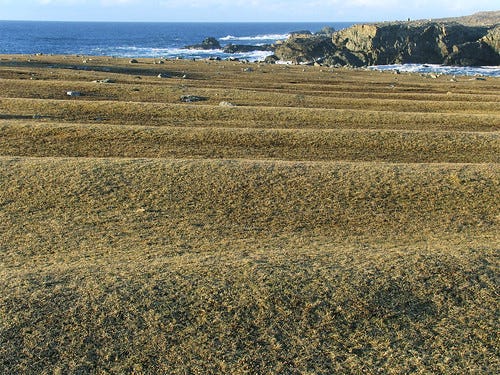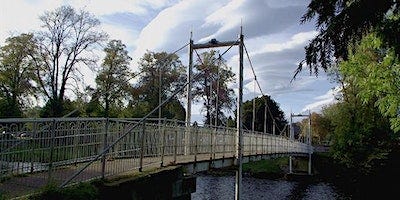In the Scottish Highlands, a quiet but profound testament to historical ingenuity and resilience lies in the form of lazy beds. These agricultural structures, known as 'feannagan' in Gaelic, have stood the test of time, offering today's world lessons in sustainable farming and climate adaptation.
The Origin and Design of Lazy Beds
The widespread development of lazy beds is intertwined with the Highland Clearances, a period of forced displacement and social upheaval during the 18th and 19th centuries. As tenants were evicted from arable land, to make way for large-scale sheep farming, those who remained in Highland had little choice but to make the most of the limited remaining land they could find. Lazy beds emerged from the necessity to cultivate the land for food growing, in challenging environments.
With its wet and peaty soil, Highlands is not always conducive to traditional farming methods. In response to these conditions, subsistence farmers devised the lazy bed system. Strips of sod were turned over to create raised beds and in so doing provided well-drained and fertile soil. These elevated plots allowed for successful cultivation in otherwise challenging land conditions.
The beds themselves were then enhanced by adding fertilizers, such as manure, decomposed straw, or seaweed, depending on the available resources. This approach was helped to grow crops in those areas with limited warmth, shallow soil, and poor drainage, which explains their common use in many of the coastal and higher bog regions of in the west and north west highlands.
Elevated beds are drier and thus the growing medium becomes warmer than the surrounding damp, flat land. They heat up faster in the morning and hold onto the warmth for a longer period, this encourages growth of crops which need warmer conditions to start to grow. Additionally, at night, they shield the crops from frost by allowing the heavier cold air to flow into the surrounding ditches, offering an advantage over flat fields systems.
Lazy beds became a symbol of the people's resilience, a means of survival amidst the turmoil of the time.
Lessons in Climate Adaptation
As we now face the challenges of climate change, the principles behind lazy beds might well offer us some valuable insights on resilience.
Efficient Water Management: The design of lazy beds, with their raised structure, ensure better drainage, a crucial feature in regions prone to excessive rainfall. In the context of climate change, where increased precipitation and periods of flooding are expected, this approach to water management is particularly relevant.
Soil Conservation: Soil degradation is a growing concern with more intense weather events. A well managed no dig raised structure of a lazy bed builds soil structure, preserving topsoil, maintaining soil fertility. Drawing lessons from this aspect of soil conservation may well prove critical as we look for ways to create local agricultural productivity in the face of ever increasing environmental challenges.
Present-day Relevance
Today, the remnants of lazy beds across the Highlands – in places like the Isle of Skye, the Outer Hebrides, and coastal Sutherland – are more than historical curiosities. They represent a sustainable approach to land use that is increasingly more and more relevant. As modern agriculture grapples with the realities of climate change, revisiting these ancient methods offers inspiration for adaptation and resilience.
Beyond Agriculture
The implications of lazy beds stretch way beyond agriculture. They symbolise a more harmonious relationship with the land. In the Scottish Highlands, the legacy of lazy beds is a lesson in endurance, adaptability, and environmental stewardship. As we confront the challenges of climate change and seek sustainable solutions, these ancient structures offer a window back in time, providing insights that are as relevant now as they were centuries ago. Perhaps the key to future sustainability lies in the wisdom of the past.
High Life Highland Countryside Rangers are part of the Highland Adapts Initiative finding solutions to become a climate ready region.
Imogen Furlong, the High Life Highland Countryside Ranger Manager, is known for her enthusiasm, organisation, and drive. Her deep passion for the Scottish Highlands' wildlife and extensive experience in outdoor education and recreation management have been central to this role. Imogen is a practical and collaborative project manager, empowering her teams to work effectively in communities and contribute to local conservation efforts.
Interested in talking about Climate Change with us - We have a number of FREE events taking place across Libraries at the moment. Look out for events with #ShelfLife
Climate Conversation and Fabric Flowers
Tain Library
Tuesday, 20 February 2024 at 18:00 GMT
City Explorer Walk - Ness Islands & The River Ness
Wednesday, 21 February 2024 at 11:00 GMT
Climate Conversation and build your own Terrarium
Dingwall Community Library
Tuesday, 5 March 2024 at 18:30 GMT
Hands on climate change - family fun
Fort William Library
Tuesday, 19 March 2024 at 16:00 GMT















